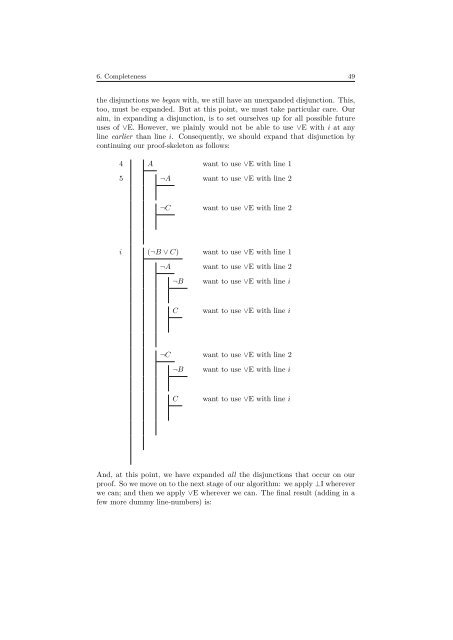Metatheory - University of Cambridge
Metatheory - University of Cambridge
Metatheory - University of Cambridge
You also want an ePaper? Increase the reach of your titles
YUMPU automatically turns print PDFs into web optimized ePapers that Google loves.
6. Completeness 49<br />
the disjunctions we began with, we still have an unexpanded disjunction. This,<br />
too, must be expanded. But at this point, we must take particular care. Our<br />
aim, in expanding a disjunction, is to set ourselves up for all possible future<br />
uses <strong>of</strong> ∨E. However, we plainly would not be able to use ∨E with i at any<br />
line earlier than line i. Consequently, we should expand that disjunction by<br />
continuing our pro<strong>of</strong>-skeleton as follows:<br />
4 A want to use ∨E with line 1<br />
5 ¬A want to use ∨E with line 2<br />
¬C want to use ∨E with line 2<br />
i (¬B ∨ C) want to use ∨E with line 1<br />
¬A want to use ∨E with line 2<br />
¬B want to use ∨E with line i<br />
C<br />
want to use ∨E with line i<br />
¬C want to use ∨E with line 2<br />
¬B want to use ∨E with line i<br />
C<br />
want to use ∨E with line i<br />
And, at this point, we have expanded all the disjunctions that occur on our<br />
pro<strong>of</strong>. So we move on to the next stage <strong>of</strong> our algorithm: we apply ⊥I wherever<br />
we can; and then we apply ∨E wherever we can. The final result (adding in a<br />
few more dummy line-numbers) is:
















